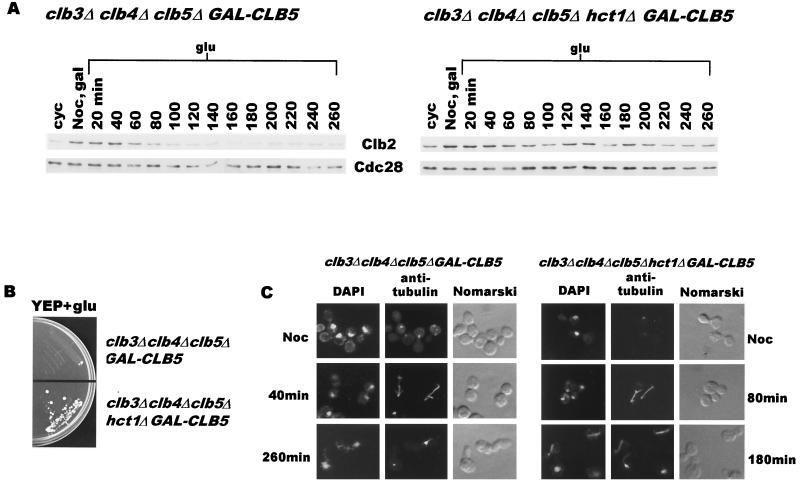FIG. 4.
(A) Deletion of HCT1 relieves G2/M arrest in clb3Δ clb4Δ clb5Δ cells. clb3Δ clb4Δ clb5Δ GAL-CLB5::TRP1 (US2417) and clb3Δ clb4Δ clb5Δ hct1Δ GAL-CLB5::TRP1 (US2440) cells were treated with nocodazole (15 μg/ml) for 3.5 h in YEP+Gal at 24°C. The cells were washed and resuspended in YEP+Glu. Clb2 and Cdc28 protein levels were monitored in samples collected at 20-min intervals. (B) Deletion of HCT1 allows clb3Δ clb4Δ clb5Δ cells to grow on YEP-Glu medium. (C) Deletion of HCT1 relieves G2/M arrest in clb3Δ clb4Δ clb5Δ cells. The left panels show cells from the experiment described for panel A. clb3Δ clb4Δ clb5Δ cells form a mitotic spindle within 40 min after the release from nocodazole arrest but eventually are blocked in G2/M of the subsequent cycle without mitotic spindles (260-min sample). The right panels show that clb3Δ clb4Δ clb5Δ hct1Δ cells have reassembled spindles (80-min sample) after the release and continue to progress through the next cycle as indicated by the presence of mitotic spindles of various sizes (180-min sample). Noc, nocodazole; DAPI, 4′,6′-diamidino-2-phenylindole.

